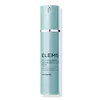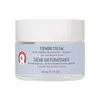What's inside
What's inside
 Key Ingredients
Key Ingredients

 Benefits
Benefits

 Concerns
Concerns

 Ingredients Side-by-side
Ingredients Side-by-side

Water
Skin ConditioningGlycerin
HumectantMethylsilanol Mannuronate
Skin ConditioningPullulan
Acrylates/Vinyl Isodecanoate Crosspolymer
Emulsion StabilisingMacadamia Ternifolia Seed Oil
EmollientNylon-12
Phenoxyethanol
PreservativeChlorphenesin
AntimicrobialPadina Pavonica Thallus Extract
Skin ConditioningParfum
MaskingCyathea Cumingii Leaf Extract
Arachidyl Alcohol
EmollientVirola Surinamensis Seed Butter
EmollientBehenyl Alcohol
EmollientArachidyl Glucoside
EmulsifyingChlorella Vulgaris Extract
Skin ConditioningHippophae Rhamnoides Fruit Oil
Skin ProtectingTocopherol
AntioxidantAcacia Decurrens Flower Extract
MaskingRosa Centifolia Flower Extract
AstringentCinnamic Acid
PerfumingGlyceryl Caprylate
EmollientLevulinic Acid
PerfumingPotassium Sorbate
PreservativeXanthan Gum
EmulsifyingSorbic Acid
PreservativeLinalool
PerfumingCitronellol
PerfumingGeraniol
PerfumingLimonene
PerfumingSodium Levulinate
Skin ConditioningSodium Hydroxide
BufferingWater, Glycerin, Methylsilanol Mannuronate, Pullulan, Acrylates/Vinyl Isodecanoate Crosspolymer, Macadamia Ternifolia Seed Oil, Nylon-12, Phenoxyethanol, Chlorphenesin, Padina Pavonica Thallus Extract, Parfum, Cyathea Cumingii Leaf Extract, Arachidyl Alcohol, Virola Surinamensis Seed Butter, Behenyl Alcohol, Arachidyl Glucoside, Chlorella Vulgaris Extract, Hippophae Rhamnoides Fruit Oil, Tocopherol, Acacia Decurrens Flower Extract, Rosa Centifolia Flower Extract, Cinnamic Acid, Glyceryl Caprylate, Levulinic Acid, Potassium Sorbate, Xanthan Gum, Sorbic Acid, Linalool, Citronellol, Geraniol, Limonene, Sodium Levulinate, Sodium Hydroxide
Water
Skin ConditioningStearic Acid
CleansingGlycerin
HumectantNiacinamide
SmoothingC12-15 Alkyl Benzoate
AntimicrobialCaprylic/Capric Triglyceride
MaskingGlyceryl Stearate Se
EmulsifyingGlyceryl Stearate
EmollientDimethicone
EmollientCetearyl Alcohol
EmollientPanthenol
Skin ConditioningColloidal Oatmeal
AbsorbentSoluble Collagen
HumectantPentapeptide-34 Trifluoroacetate
EmollientSqualane
EmollientChrysanthemum Parthenium Extract
Skin ConditioningGlycyrrhiza Glabra Root Extract
BleachingCamellia Sinensis Leaf Extract
AntimicrobialCeramide NP
Skin ConditioningDiamond Powder
AbrasiveButyrospermum Parkii Butter Extract
Skin ConditioningAllantoin
Skin ConditioningCaprylyl Glycol
EmollientPolymethylsilsesquioxane
Propanediol
SolventXanthan Gum
EmulsifyingPhenoxyethanol
PreservativeSodium Hydroxide
BufferingDisodium EDTA
Sodium Benzoate
MaskingTetrasodium EDTA
Water, Stearic Acid, Glycerin, Niacinamide, C12-15 Alkyl Benzoate, Caprylic/Capric Triglyceride, Glyceryl Stearate Se, Glyceryl Stearate, Dimethicone, Cetearyl Alcohol, Panthenol, Colloidal Oatmeal, Soluble Collagen, Pentapeptide-34 Trifluoroacetate, Squalane, Chrysanthemum Parthenium Extract, Glycyrrhiza Glabra Root Extract, Camellia Sinensis Leaf Extract, Ceramide NP, Diamond Powder, Butyrospermum Parkii Butter Extract, Allantoin, Caprylyl Glycol, Polymethylsilsesquioxane, Propanediol, Xanthan Gum, Phenoxyethanol, Sodium Hydroxide, Disodium EDTA, Sodium Benzoate, Tetrasodium EDTA
 Reviews
Reviews

Ingredients Explained
These ingredients are found in both products.
Ingredients higher up in an ingredient list are typically present in a larger amount.
Glycerin is already naturally found in your skin. It helps moisturize and protect your skin.
A study from 2016 found glycerin to be more effective as a humectant than AHAs and hyaluronic acid.
As a humectant, it helps the skin stay hydrated by pulling moisture to your skin. The low molecular weight of glycerin allows it to pull moisture into the deeper layers of your skin.
Hydrated skin improves your skin barrier; Your skin barrier helps protect against irritants and bacteria.
Glycerin has also been found to have antimicrobial and antiviral properties. Due to these properties, glycerin is often used in wound and burn treatments.
In cosmetics, glycerin is usually derived from plants such as soybean or palm. However, it can also be sourced from animals, such as tallow or animal fat.
This ingredient is organic, colorless, odorless, and non-toxic.
Glycerin is the name for this ingredient in American English. British English uses Glycerol/Glycerine.
Learn more about GlycerinPhenoxyethanol is a preservative that has germicide, antimicrobial, and aromatic properties. Studies show that phenoxyethanol can prevent microbial growth. By itself, it has a scent that is similar to that of a rose.
It's often used in formulations along with Caprylyl Glycol to preserve the shelf life of products.
Sodium Hydroxide is also known as lye or caustic soda. It is used to adjust the pH of products; many ingredients require a specific pH to be effective.
In small amounts, sodium hydroxide is considered safe to use. However, large amounts may cause chemical burns due to its high alkaline.
Your skin has a natural pH and acid mantle. This acid mantle helps prevent harmful bacteria from breaking through. The acid mantle also helps keep your skin hydrated.
"Alkaline" refers to a high pH level. A low pH level would be considered acidic.
Learn more about Sodium HydroxideWater. It's the most common cosmetic ingredient of all. You'll usually see it at the top of ingredient lists, meaning that it makes up the largest part of the product.
So why is it so popular? Water most often acts as a solvent - this means that it helps dissolve other ingredients into the formulation.
You'll also recognize water as that liquid we all need to stay alive. If you see this, drink a glass of water. Stay hydrated!
Learn more about WaterXanthan gum is used as a stabilizer and thickener within cosmetic products. It helps give products a sticky, thick feeling - preventing them from being too runny.
On the technical side of things, xanthan gum is a polysaccharide - a combination consisting of multiple sugar molecules bonded together.
Xanthan gum is a pretty common and great ingredient. It is a natural, non-toxic, non-irritating ingredient that is also commonly used in food products.
Learn more about Xanthan Gum